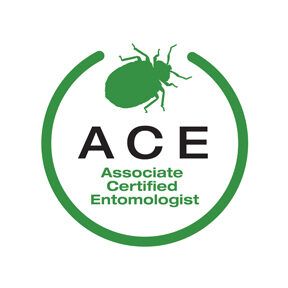
Imagine the sound of a crackling fire, fresh cocoa and snuggles with your lucky partner. While you sit and gaze into each others eyes, your partner sees bugs crawling out of the cracks and crevices of your home!!! Creepy brown six legged insects leaping from corners to fly across the room making a horrid sound as it flaps its wings to maintain flight. This may sound like a hip horror flick but your new reality is your unchecked stinkbug issue built up from years of ignoring them.
Your stinkbug issue started probably a few years ago as a few. The next year you saw just enough for you to think you may need help but few enough to make you grab a broom instead. Year five or six of a stinkbug issue is really where your partner says “Honey I think we need to call a professional.” Listen to them, they are not wrong. Stinkbugs leave a pheromone to get back to the attic they last overwintered in. This isn’t only a flag for that stinkbug. It is a flag for every stinkbug that gets close enough to catch a whiff of the sweet sweet pheromone. Once the cold sets in they will enter back into the attic and most will sit tight throughout the cold season. As the fireplaces get lit or temperatures warm stinkbugs will find ways in around window and door frames, recessed lighting and other areas with a gap big enough to get through.
Is there anyway to stop a infestation of stinkbugs? First lets talk about why they are here. A lot of us can remember being kids and never seeing one. The Brown Marmorated Stinkbug is not a native insect. It was originally from Asia. In 1998 it was discovered in Allentown Pennsylvania. Being a foreign invader it has but one natural predator a Asian parasitic wasp called a Samurai wasp. Which means they got to live mostly unchecked except by the measures we took ourselves to limit the population. In just a few years it became a leading insect in crop damage done to a large spread of foods like apples, apricots, cherries, corn, peaches, peppers, tomatoes, and soybeans. Because of this the USDA has made the control of Brown Marmorated Stinkbugs top priority. They started breeding the Samurai wasp in hope to be able to introduce them into the wild. During field studies they found natural populations of Samurai wasps appeared. After researching more it was concluded that these wasp colonies where natural and not from any local labs. We do not know yet how far reaching these natural populations will go but hopefully they get around the Americas quick.
To get to the original question, yes a home can be protected from an invasion of stinkbugs. Typically this would be a service to seal possible entries, treat the attic and wall voids with a properly labeled material. Often a dust/desiccant. These measures will greatly diminish if not stop an stinkbug infestation.
Okay so maybe its not a love story but if you or anyone you know needs help with stink bugs give us or your local pest management professional a call.
Thanks for reading! Chris Mojo A.C.E
Bee Smart Pest Control Office 860-446-7500 ( Connecticut Only)



